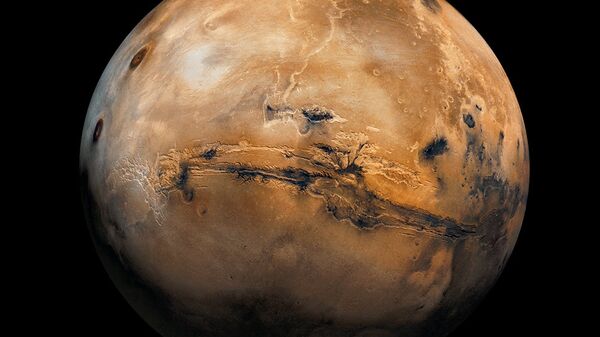A second Martian meteorite which shows 'signs of microbial life' has been found, Hungarian researchers say in their report on the latest study, published in Open Astronomy, reigniting 'bacterial' fossils claims made 20 years ago by NASA.
The meteorite, officially known as ALH-77005, is claimed to contain 'biosignatures', which researchers describe as textures and features left behind by organisms.
READ MORE: Heading to Mars: New NASA Study Notes Gene Mods, Changes in Microbe
Experts resorted to advanced imaging techniques that they say revealed microfilaments created by fossilised Martian microbes.
The Hungarian researchers also examined minerals and other material embedded in the stone, and conducted isotope tests to check for the chemical components essential for life. The studies led them to conclude that the microscopic filaments inside could point to the presence of bacteria which survive by eating iron rust.
Life on Mars: NASA Curiosity rover digs up clay – PROOF of water on Mars? | Science | News https://t.co/6mewNgD6tY pic.twitter.com/9w0E68cuvF
— Techterrene (@techterrene) April 15, 2019
READ MORE: NASA Photo INDICATES There's LIFE on Mars, Stargazer Claims
Back in 1996, NASA scientists claimed they found proof of microbial life in a meteorite from Mars known as ALH 84001, similarly citing the appearance of strands and filaments. The rock was produced four billion years ago on Mars and landed on Earth around 13,000 years ago.
Clinton said: "Today, rock 84001 speaks to us across all those billions of years and millions of miles. It speaks of the possibility of life. If this discovery is confirmed, it will surely be one of the most stunning insights into our universe that science has ever uncovered."
Scientists at the time said that it was impossible to prove or refute such claims as the markings could have been formed by non-biological processes.
READ MORE: Scientists Prove Bacteria, Single-Cell Entities Can Survive on Mars
Dr Ildiko Gyollai from the Hungarian Academy of Science (HAS) Research Centre for Astronomy and Earth Sciences in Budapest led the most recent study. Writing in the paper, its authors said: "Comparing recent results and interpretation with other meteorites, it can be raised, that on these similarities the microbially mediated biosignatures can be proposed microbial mediation by [iron oxidising bacteria] on Mars."
The meteorite is claimed to contain 'biosignatures', which researchers describe as textures and features left behind by organisms. The image shows a thin section of ALH-77005 in plane polarised light, with the area studied marked by a brown rectangle, and experts concluding that the microscopic filaments inside could point to the presence of bacteria that survive by eating iron rust.
The full report on the latest study was published in Open Astronomy.



